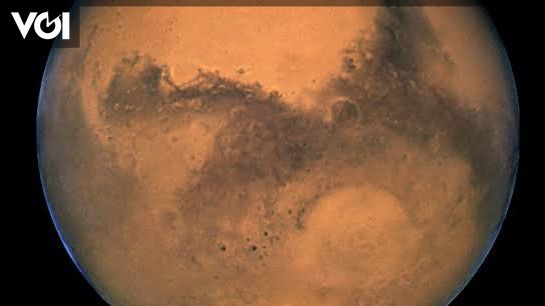JAKARTA – Planet Mars is really like Planet Earth. Besides being claimed to have oxygen and water levels, the planet has also experienced natural disasters, namely earthquakes.
The report comes from NASA’s InSight rover, which may not be as popular as its cousins, Perseverance and Curiosity.
Even so, InSight has often done important work in understanding more about the innards on Mars, and how the planet is rocked by its own earthquake, the Martian earthquake.
From the InSight report, researchers have identified the two largest earthquakes seen to date on the Red Planet.
First, the earthquake occurred on August 25, 2021, and the second shortly thereafter on September 18, 2021. Both events were the largest mars quakes detected to date and also occurred in the distant Martian side of InSight, while most of the detected mars quakes originated more close to the rover robot.
The researchers explained in the study, published in the journal The Seismic Record, that the August earthquake, called S0976a, had a magnitude of 4.2, while the September earthquake, called S1000a, had a magnitude of 4.1.
This earthquake made them five times more powerful than previously detected mars earthquakes. The first quake lasted for a typical period of a few seconds, but the second quake lasted a long time.
With both 94 minutes in total, making it the longest recorded event so far. This earthquake also has an unusually wide frequency, which means its energy spreads across the entire frequency from 0.1Hz to 5Hz.
“Not only is it the largest and most distant event by a sizeable margin, S1000a has a spectrum and duration unlike any other previously observed event. They are truly extraordinary events in the Martian seismic catalog,” said lead researcher Anna Horleston as quoted by Digital Trends, Monday, April 25.
–
–
–
The researchers said the first quake was particularly interesting because it was found to have originated in the Valles Marineris canyon network. Previously, they had predicted there would be seismic activity in this region, but it was the first time they had actually found it there.
In contrast, most of the mars earthquakes detected to date have come from the Cerberus Fossae region. The quake came from the far side of the planet from InSight, in an area called the core shadow zone.
The core shadow zone is the region where seismic waves (called P and S waves) cannot propagate directly to the rover, because the planet’s core blocks them. To detect the origin of the earthquake, researchers must look at the reflection of these waves (called PP and SS waves).
The ability to detect mars earthquakes coming from this zone is a major achievement in seismology on Mars.
“Recording events within the core shadow zone is a real stepping stone to our understanding of Mars. Prior to these two events, the majority of seismicity was within about 40 degrees of InSight,” explains Savas Ceylan, co-author of the paper from the ETH Zürich institute.
“In the shadow of the core, energy traverses a part of Mars that we haven’t sampled seismologically before.”
–


